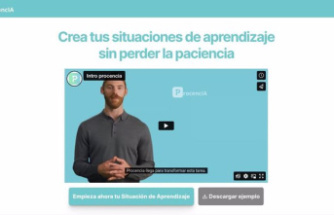(Information sent by the signatory company)
Madrid, March 17, 2023.
According to the European Report on Drugs (2022), the average age at which the first use of cocaine occurs is 23 years, while that of the start of treatment against addiction is 32; which is alarming, especially if one takes into account that the highest consumption occurs between the ages of 15 and 34. To avoid the problems that this drug causes in the organism and in the environment of the addict in the long term, early treatment becomes essential, especially at this stage of life.
In Spain, 10.9% of the population between the ages of 15 and 64, that is, around 5,000,000 people, have used cocaine at some time (European Observatory on Drugs and Drug Addiction, 2022). In addition, it is estimated that 24.5% of adolescents between the ages of 14 and 18 have used cocaine in the last year. Effects of cocaine: irreversible physical and developmental changes. An article published in PNAS indicates that exposure to cocaine Cocaine can have a long-lasting impact on neural structure and brain function, affecting cognitive, emotional, and social performance. This is also confirmed by a study from the scientific journal The British Pharmacological Society when talking about early cocaine use and how it could alter the normal growth of brain regions affected by cocaine, specifically the reward system, and have repercussions on the mesolimbic system. adult when there is an increase in dopamine levels in the body, causing long-term functional changes. At a physiological level, cocaine use immediately generates serious health conditions such as tachycardia. Over time, it can cause insomnia, depression or anorexia, among other diseases. "How can I know if my son is using cocaine?" There are different symptoms of cocaine that allow you to identify a young addict. Fernando Botana, director of the Impasse Addictions addiction center, affirms that the physical effects of cocaine are the easiest to detect: "dilated pupils, red eyes, tremors, persistent cough, poor hygiene, tiredness or bleeding are the first physiological changes observed in patients addicted to cocaine." It is also essential to pay attention to changes in behavior - irritability, social withdrawal, changes in appetite and sleep, loss of interest, etc. - and to behaviors such as stealing money or items of value or a deterioration in the family relationship or a drop in performance. How to help a cocaine addict? To talk about possible drug use with adolescents and young people, it is important to approach addiction from empathy and emotional support. Generate an environment of understanding so that the addict does not feel alone or judged, but motivated to overcome her addiction. Participating in healthy activities in positive and drug-free spaces will also be key. Although the real impact will be provided by the help of psychologists and psychotherapists specialized in addictions. The intervention of an addiction expert will be key to ending cocaine use, but this It will only be achieved if there is, on the part of the young addict, a predisposition to end the addiction. Clinics such as Impasse Addictions, which have a track record of more than 30 years of experience in the treatment of cocaine addiction, provide support and resources for adolescents and young people who do not know how to quit cocaine, always with empathy and with a vision treatment of addiction in safe spaces without taboos.
ContactContact name: Carla Iulia LangContact description: Carla Iulia LangContact telephone number: 626675366













